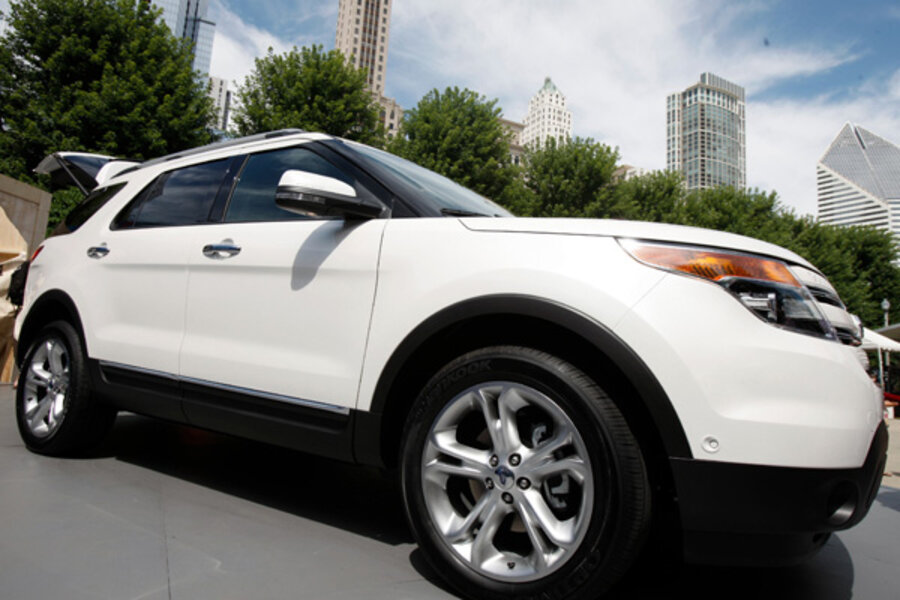As 2011 Ford Explorer turns heads, so does its marketing campaign
The 2011 Ford Explorer redesign unveiled Monday signals the biggest change to the automaker’s signature sports utility vehicle since it was introduced in 1990. It's 20 percent more fuel efficient than the current Explorer (30 percent more with the four-cylinder engine), looks more carlike than ever, and offers a smoother ride.
But the Explorer's social media marketing is also turning heads.
The Detroit automaker turned a Manhattan street into a mountain so CEO Alan Mulally could preview the SUV. Then Ford streamed that as well as other video on Facebook. Indeed, the SUV’s Facebook page (one of several that Ford runs) offered its more than 48,000 fans updated information about the new model including dozens of videos, photos, and live chats with company engineers about the coming changes.
The online ‘Reveal,’ as it’s called on the Facebook page, indicates how much Ford and other corporations have grown to rely on social media to target their marketing efforts and engage consumers as never before.
“Ford has been a leader in interactive marketing, and especially social media” says Tom Fauls, professor of advertising at Boston University, pointing to the company’s dozen or so Twitter accounts, Facebook pages, and YouTube channel.
Indeed, Ford’s social networking efforts are highlighted prominently across the top of the company’s homepage, and Scott Monty, the head of the company’s social media marketing arm, even runs his own blog on the topic, where he comments on the latest trends in interactive marketing.
This isn’t the first massive interactive advertising campaign the company’s taken on – Ford launched a similar buzz campaign for its Fusion and Focus models as well.
There are many reasons that Ford and other corporations are investing heavily in online marketing. It allows them to target a specific group interested in their product (as opposed to television advertising, which has a wide reach, but which marketers cannot tailor as easily), and it’s relatively cheap.
Corporations are also “using social media to establish a presence, give their brand a voice in the marketplace, interact with their audience,” says Gene Kincaid, professor of advertising and public relations at the University of Texas at Austin.
“Social media may be evolving into a hybrid between research and customer management relationship,” adds Professor Kincaid, allowing marketers to both talk and listen to their audience.
That audience, incidentally, is no longer just young people. Baby boomers, and even older consumers, are turning to social media in growing numbers – and marketers are making more sophisticated choices about which social media to employ to reach specific audiences.
“Facebook skews older – while Twitter still skews younger,” says Gary Wilcox, a professor of advertising who focuses on social media at the University of Texas at Austin. “The fact that [Ford] chose Facebook instead of Twitter indicates that that vehicle is for a more mature audience.”





